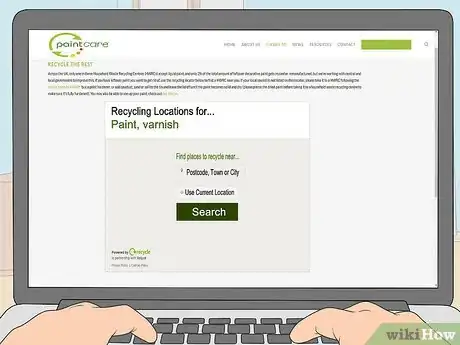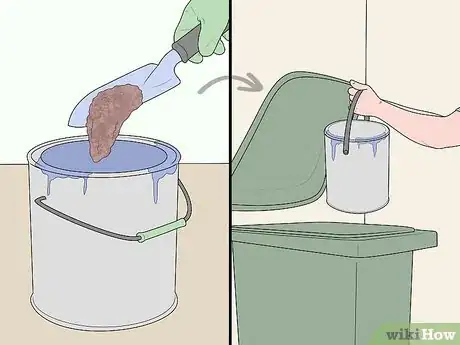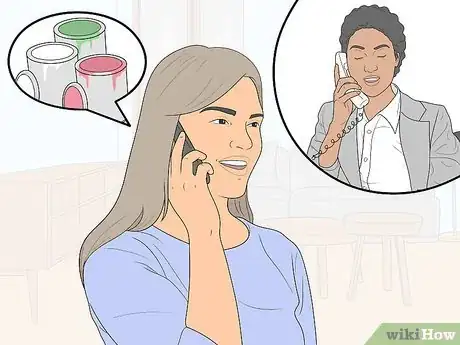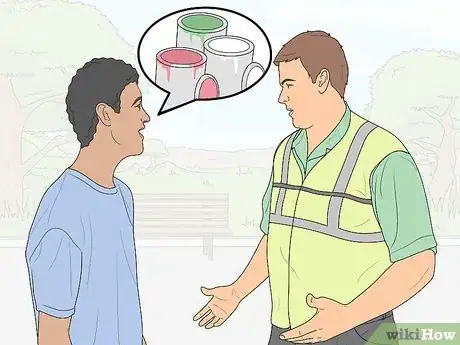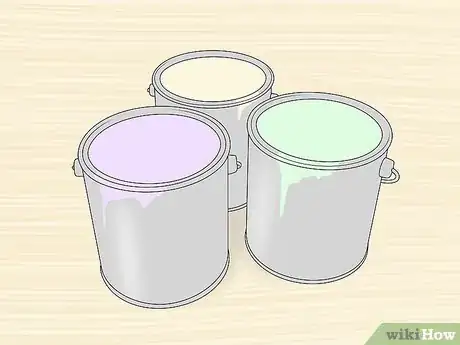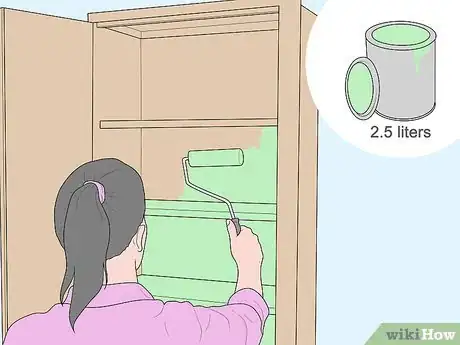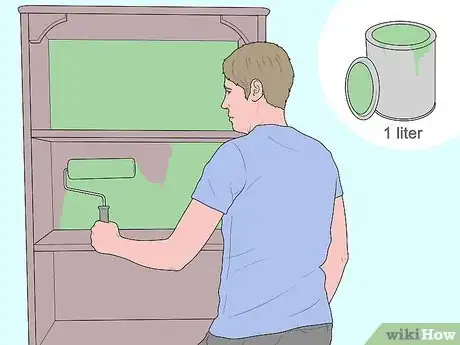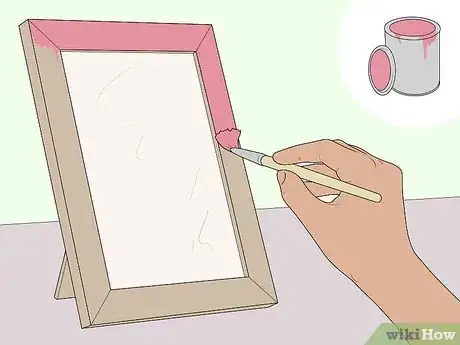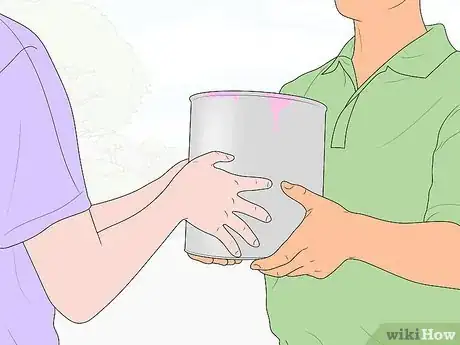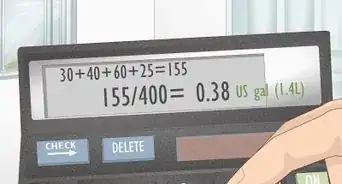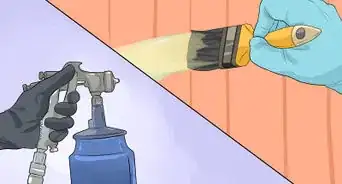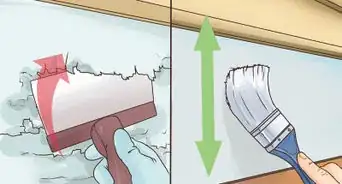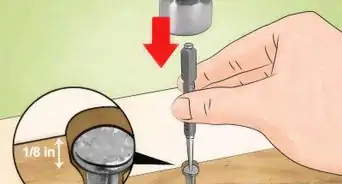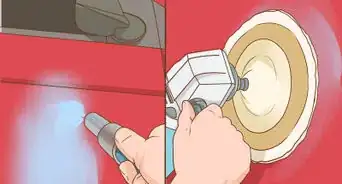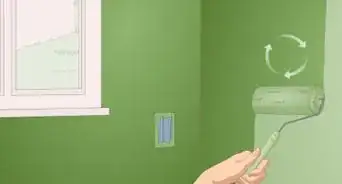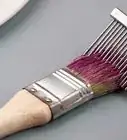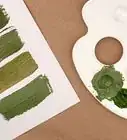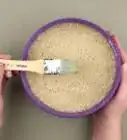This article was co-authored by Andres Matheu and by wikiHow staff writer, Jennifer Mueller, JD. Andres Matheu is the Owner of Hömm Certified Painting Systems, an Interior and Exterior Residential painting business based in the Washington, DC Metro area. Andres specializes in interior and exterior residential painting, color consultations, cabinet refinishing, wallpaper removal, and epoxy flooring among other services. An EPA Lead-safe Certified Firm, Hömm Certified Painting Systems has been awarded the Best of Houzz 2019 Service, Angie's List Super Service Award 2019, and Northern Virginia Magazine's 2018 Best Home Experts (painters) award.
This article has been viewed 29,114 times.
You've finished your project and now you've got cans of leftover paint. Liquid paint is considered hazardous waste and is dangerous for the environment as well as the health of people and animals. Ideally, find another project to use up the paint or give it to someone else who can use it. If those options aren't available to you, arrange for collection of the paint as hazardous waste unless you only have a small amount left over that you can dry out.[1]
Steps
Discarding Paint Properly
-
1Find out if your local recycling center takes paint. Only about a third of the Household Waste Recycling Centers (HWRCs) across the UK accept liquid paint. However, if one of those HWRCs happens to be close by, you can easily dispose of your leftover paint this way.[2]
- Enter your postcode, town, or city at https://www.paintcare.org.uk/recycle-the-rest/ to find the nearest HWRC that accepts liquid paint.
-
2Dry out the paint if you want to toss it in with the regular trash. You can dry out the paint by adding an absorbent material, like sawdust, soil, or even cat litter. Fill the container with absorbent material at least to the level of the paint or just above. You may have to add more if it doesn't completely soak up the liquid. Once it's dry, you can throw it away with your regular trash.[3]
- Alternatively, you can find special powder that you add to the paint and it hardens within a couple of hours. Ask for it in a home improvement store.
- Leave the container with the lid off in a well-ventilated area away from animals or children. If the paint hasn't dried after a day or two, add more material to help soak up the moisture.
- Pierce the dried paint with a knife to make sure it's fully dried before you throw it out.[4]
- This is typically the best way to dispose of a small amount of leftover paint. If you have more than half a can left, it will be difficult to dry it out completely.
- Contact your council or check the website to find out whether you should put the lid back on the can or leave it off. Some councils prefer that you put the lid back on. However, others require you to leave it off so collection crews can see that the can is empty or the paint is completely dry.[5]
Advertisement -
3Contact your local council to see if they'll take liquid paint. If you have too much paint to dry out properly or don't want to wait for it to completely dry out, you'll need a hazardous waste service. Most councils offer a hazardous waste collection service. If you let them know what you have, they'll come out and get it for you. However, keep in mind some councils may charge for this service.[6]
- For example, the East Suffolk Council will collect, treat, and dispose of your leftover paint, but charges a minimum of £45.60 for this service.[7]
-
4Hire a specialist to remove it if council services aren't available. If you have a large amount of paint that you need to get rid of, you might want to hire a private contractor to remove it for you. Private contractors are available anywhere, so this is also a good option if your local council doesn't have a hazardous waste collection service.[8]
- Search online for private contractors who remove hazardous waste. Your council might also be able to provide you the names of some contractors.
- Private contractors can be expensive. If possible, get quotes from 2 or 3 different contractors so you can make sure you're getting the best deal.
Using up Excess Paint
-
1Save light shades to use as primers for other paint projects. Paints in shades of white or light pastel colors will work as a primer if you've got another paint project using a darker color. Label the paint with the date you opened the can so you'll know how long you've had it if you're planning on saving it for more than a few months.[9]
- Decorative paints don't often have expiration dates on them, but they will go bad after a while. The parts of the paint start to separate as soon as you open the can and expose the paint to air. Generally, if the paint can is bulging or the lid is puffed up, you know the paint is bad. You can also open it and see if it's started to separate.[10]
- Typically, if the paint is less than five years old, it is good to use.
-
2Repaint a bathroom or cupboard if you have around 2.5 liters. A smaller project that takes less paint will help use up what you have leftover and can also help brighten a space. You could also use this amount to give new life to an old piece of furniture or add some color to a small accent wall.[11]
- If you have 2.5 liters or less of a lighter color, it might be perfect for trim or baseboards. You could use brighter colors for the inside of a closet or cupboard.
- You might also put an extra coat of paint on an area you just painted that could use a little more protection.[12]
-
3Brighten up some frames or bookshelves if you have 1 liter. A liter or so of leftover paint is perfect to paint a few matching picture frames or add interest to a bookshelf or other piece of furniture with contrasting shades.[13]
- For example, if the leftover paint you have is a bold color, you might paint the inside back of the bookshelves so the back stands out behind the books.
- You might also paint a single window frame to add a pop of color to a room.
-
4Add some color to accessories if you have half a liter or less. If you only have a little paint left, it's not enough for a larger project, but you can still use it up by repainting small items and accessories around the home or office. You could also use it to freshen up an older object, such as a bowl or crate, that's starting to show its age.[14]
- If you're creative, you can imagine new decorative uses for thrift store finds. For example, you might paint an old birdcage and use it to hold a hanging plant.
- Smaller picture frames are also an option to paint if you only have a little paint leftover. For example, you might paint a small frame and candlesticks to match and turn the whole thing into a conversation piece for a shelf or coffee table.
- If you have leftover paint of different colors, you may consider mixing them, but be aware that you never know what you are going to get in the end!
-
5Donate your leftover paint to a community repaint scheme. Community repaint schemes redistribute leftover decorative paint for murals and other projects that help brighten communities and public spaces. If you can't find a way to use your leftover paint yourself, donating is a good way to get rid of it safely that also benefits the community.[15]
- To find a scheme near you, go to https://communityrepaint.org.uk/ and click "I have leftover paint" to get started.
- You might also donate your leftover paint to a local school or church. Theater groups also often take paint donations for use in painting sets.[16]
Warnings
References
- ↑ http://www.eastsuffolk.gov.uk/waste/waste-collection-and-disposal/hazardous-waste/
- ↑ https://www.paintcare.org.uk/useitup/
- ↑ http://www.eastsuffolk.gov.uk/waste/waste-collection-and-disposal/hazardous-waste/
- ↑ https://www.recyclenow.com/what-to-do-with/paint-1
- ↑ http://www.eastsuffolk.gov.uk/waste/waste-collection-and-disposal/hazardous-waste/
- ↑ https://www.norfolk.gov.uk/rubbish-recycling-and-planning/rubbish-and-recycling/hazardous-waste/disposing-of-paint
- ↑ http://www.eastsuffolk.gov.uk/waste/waste-collection-and-disposal/hazardous-waste/
- ↑ https://www.norfolk.gov.uk/rubbish-recycling-and-planning/rubbish-and-recycling/hazardous-waste/disposing-of-paint
- ↑ https://www.paintcare.org.uk/useitup/
- ↑ https://www.consumerreports.org/paints/how-long-does-leftover-paint-last/
- ↑ https://www.paintcare.org.uk/useitup/
- ↑ http://www.eastsuffolk.gov.uk/waste/waste-collection-and-disposal/hazardous-waste/
- ↑ https://www.paintcare.org.uk/useitup/
- ↑ https://www.paintcare.org.uk/useitup/
- ↑ https://www.recyclenow.com/what-to-do-with/paint-1
- ↑ http://www.eastsuffolk.gov.uk/waste/waste-collection-and-disposal/hazardous-waste/
- ↑ https://www.warwickshire.gov.uk/restrictedwaste
- ↑ https://www.warwickshire.gov.uk/restrictedwaste
- ↑ https://www.warwickshire.gov.uk/restrictedwaste
